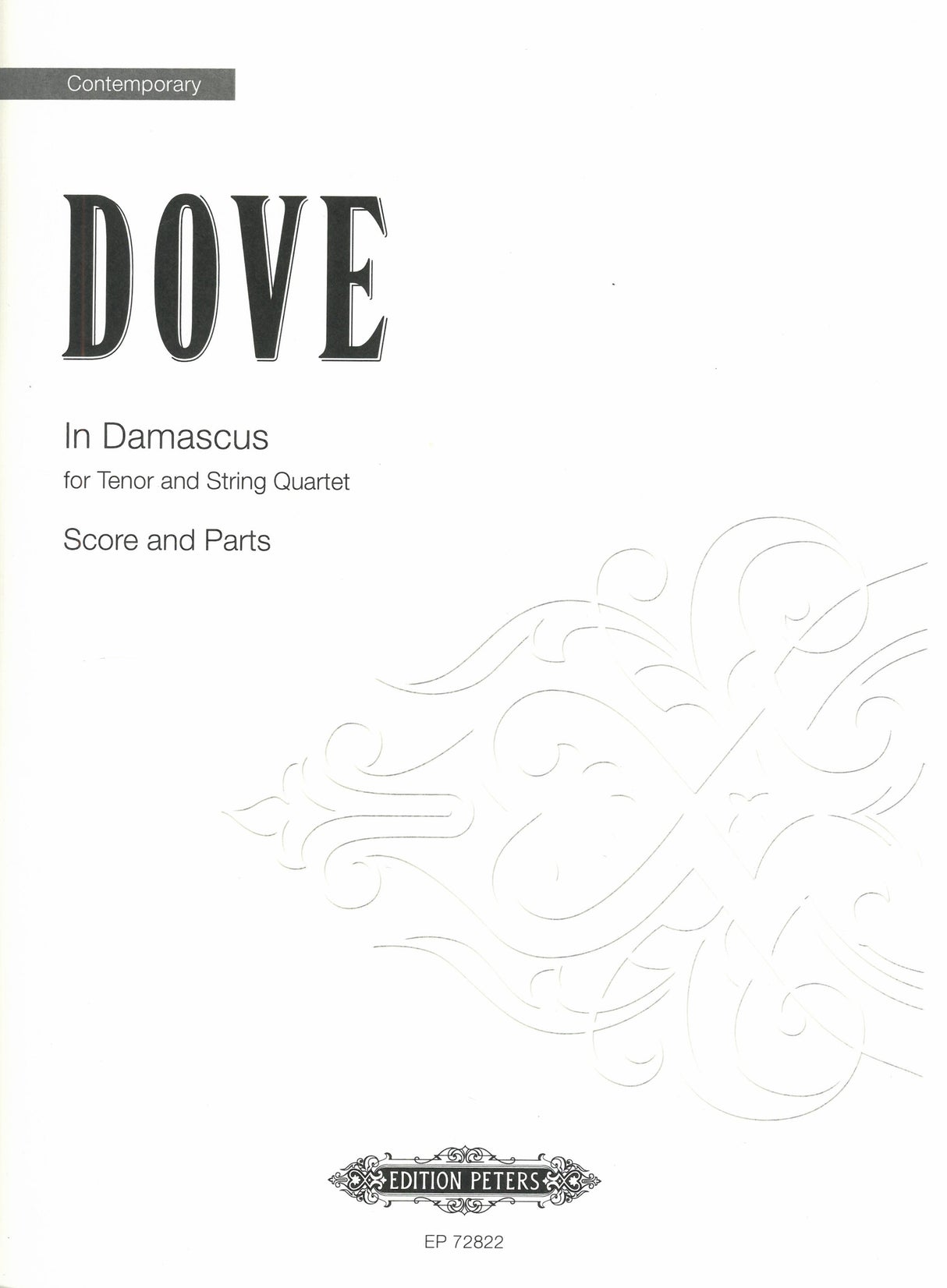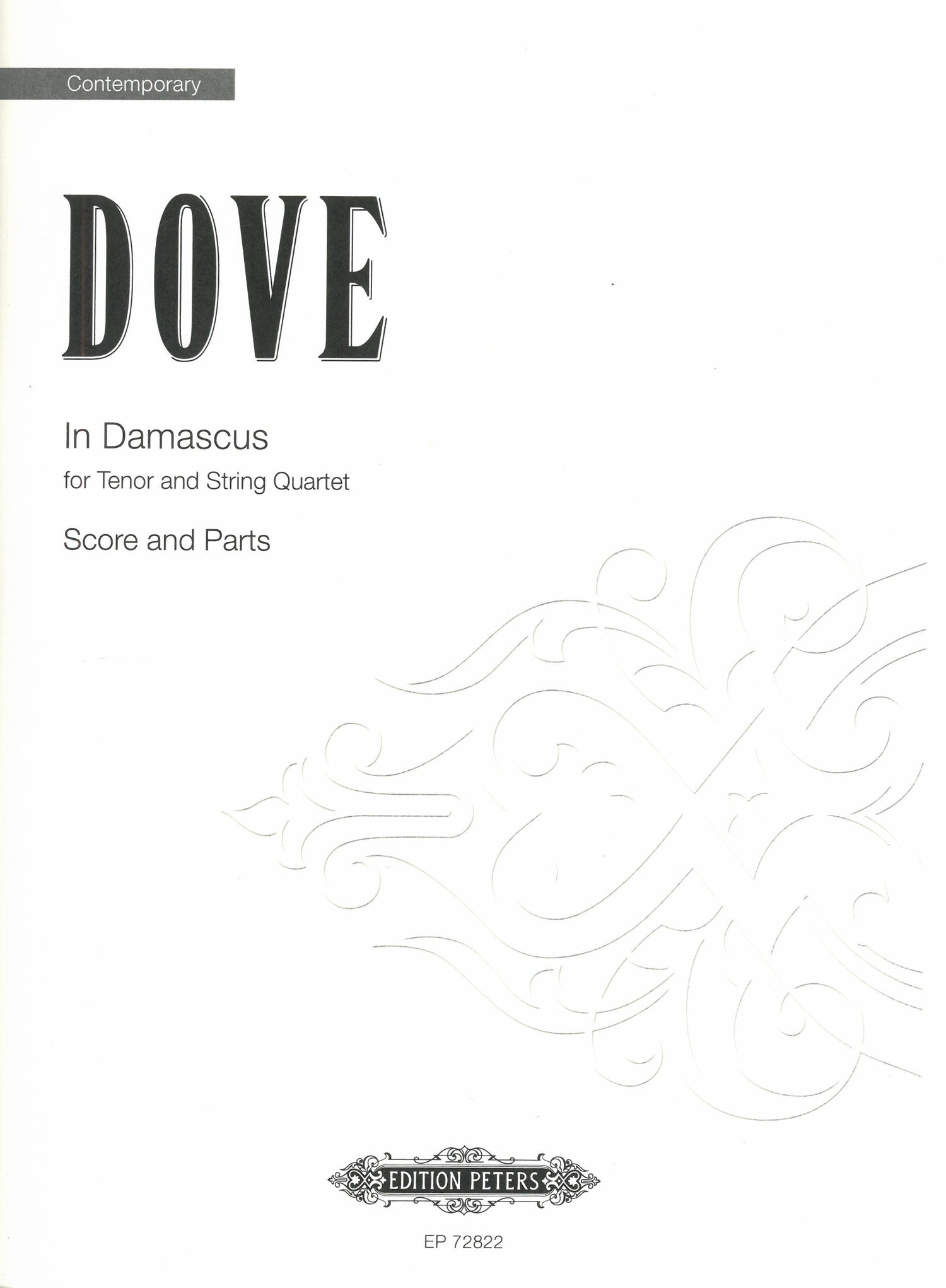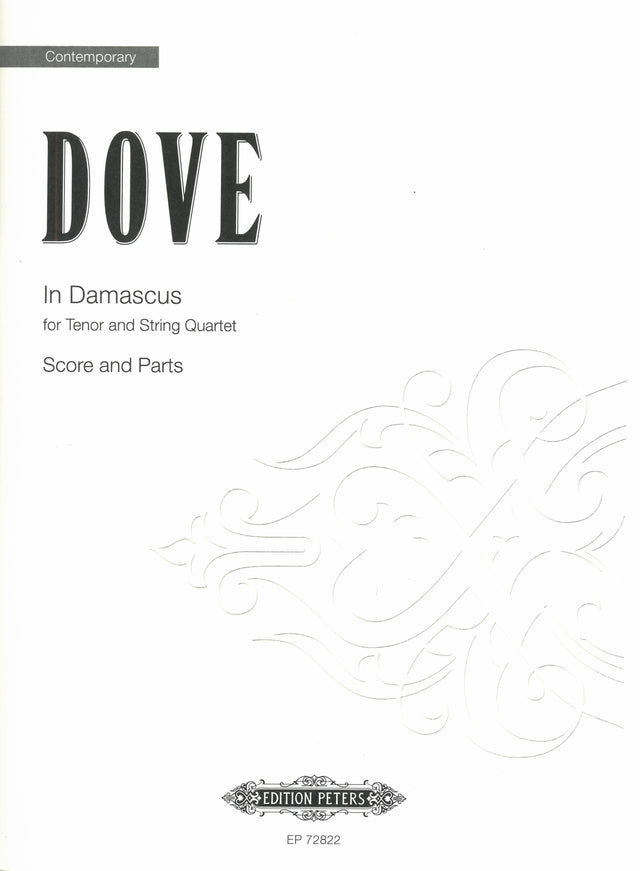Jonathan Dove
Dove: In Damascus
- Composer: Jonathan Dove (1959-)
- Format: Score & Set of Parts
- Instrumentation: String Quartet (Violin I, Violin II, Viola, Cello), Tenor
- Work: In Damascus
- ISMN:
- Size: 9.1 x 12.0 inches
- Pages: 164
Description
I have only visited Damascus once, twenty years ago, on the way to Palmyra. I had a purpose (I was writing music for a play about Palmyra's Queen Zenobia) but essentially I was a tourist. Like any visitor, I was thrilled to step out of the noisy modern city into the magical ancient world of the walled Old City, its vibrant souk leading to the magnificent mosque, and a labyrinth of winding, narrow streets filled with the smell of unleavened bread.
In Palmyra, I was met with extraordinary kindness everywhere. On one occasion, a little Bedouin boy noticed that I was risking sunstroke wandering bare-headed among the spectacular ruins: he showed me how to tie a turban, then took me to have tea with his family in their tent.
Since then, I have watched helplessly as these places of wonder have been devastated and their inhabitants scattered and killed. When the Sacconi Quartet suggested that I might choose a Syrian poet for our collaboration, I welcomed the idea.
I searched for a long time to find a contemporary poet whose work might gain from any music I could imagine. I felt it was important to find first-hand accounts of the Syrian experience – but, of course, I was always reading them in translation. in an anthology called _Syria Speaks, _I was astonished to read something that looked like prose, but was full of poetry. It was Anne-Marie McManus's fine translation of Ali Safar's _A Black Cloud in a Leaden White Sky – _an eloquent, thoughtful, contained yet vivid account of life in a war-torn country, all the more moving for its restraint.
In setting these words, I have not attempted to imitate Syrian music. However, there is what might be called a linguistic accommodation in my choice of scale, or mode. Several movements are in a mode that I first discovered while writing a cantata commemorating the First World War: it has a tuning that I associate with war, its violence and desolation. This eight-note mode is similar to scales found in Syrian music. I did not choose it in the abstract: it emerged from the harmonies I was exploring in the earlier work, and emerged again as I was looking for the right musical colours to set Ali Safar's words. in this work, its Arabic aspect is more prominent. - Jonathan Dove
Publishers use a lot of words to describe what they sell, and we know it can be confusing. We've tried to be as clear as possible to make sure you get exactly what you are looking for. Below are descriptions of the terms that we use to describe the various formats that music often comes in.
Choral Score
A score for vocalists that only contains the vocal lines. The instrumental parts are not there for reference. Generally, cheaper than a vocal score and requires multiple copies for purchase.
Facsimile
Reproductions of the original hand-written scores from the composer.
Full Score
For ensemble music, this indicates that the edition contains all parts on a single system (there are not separate parts for each player). In larger ensembles, this is for the conductor.
Hardcover
Hardbound. Generally either linen-covered or half-leather.
Orchestral Parts
Similar to a wind set, this is a collection of parts. In the case of strings, the numbers listed are the number of copies included, though generally these are available individually (often with minimum quantities required).
Paperback
When publishers offer multiple bindings (e.g. hardcover) or study scores, this is the "standard" version. If you're planning to play the music, this is probably what you want.
Performance / Playing Score
A score of the music containing all parts on one system, intended for players to share. There are not separate parts for each player.
Set of Parts
For ensemble music, this indicates that there are separate individual parts for each player.
Solo Part with Piano Reduction
For solo pieces with orchestra, this is a version that contains a piano reduction of the orchestra parts. For piano pieces, two copies are typically needed for performance.
Study Score
A small (think choral size) copy of the complete score meant for studying, and not playing. They make great add-ons when learning concertos and small chamber works.
Vocal Score
A score prepared for vocalists that includes the piano/organ part or a reduction of the instrumental parts.
Wind Set
For orchestral music, this is a collection of wind and percussion parts. The specific quantities of each instrument are notated.
With Audio
In addition to the printed music, the edition contains recordings of the pieces. This may be an included CD, or access to files on the internet.
With / Without Fingering (Markings)
Some publishers prepare two copies - a pure Urtext edition that includes no fingering (or bowing) suggestions and a lightly edited version that includes a minimal number of editorial markings.




